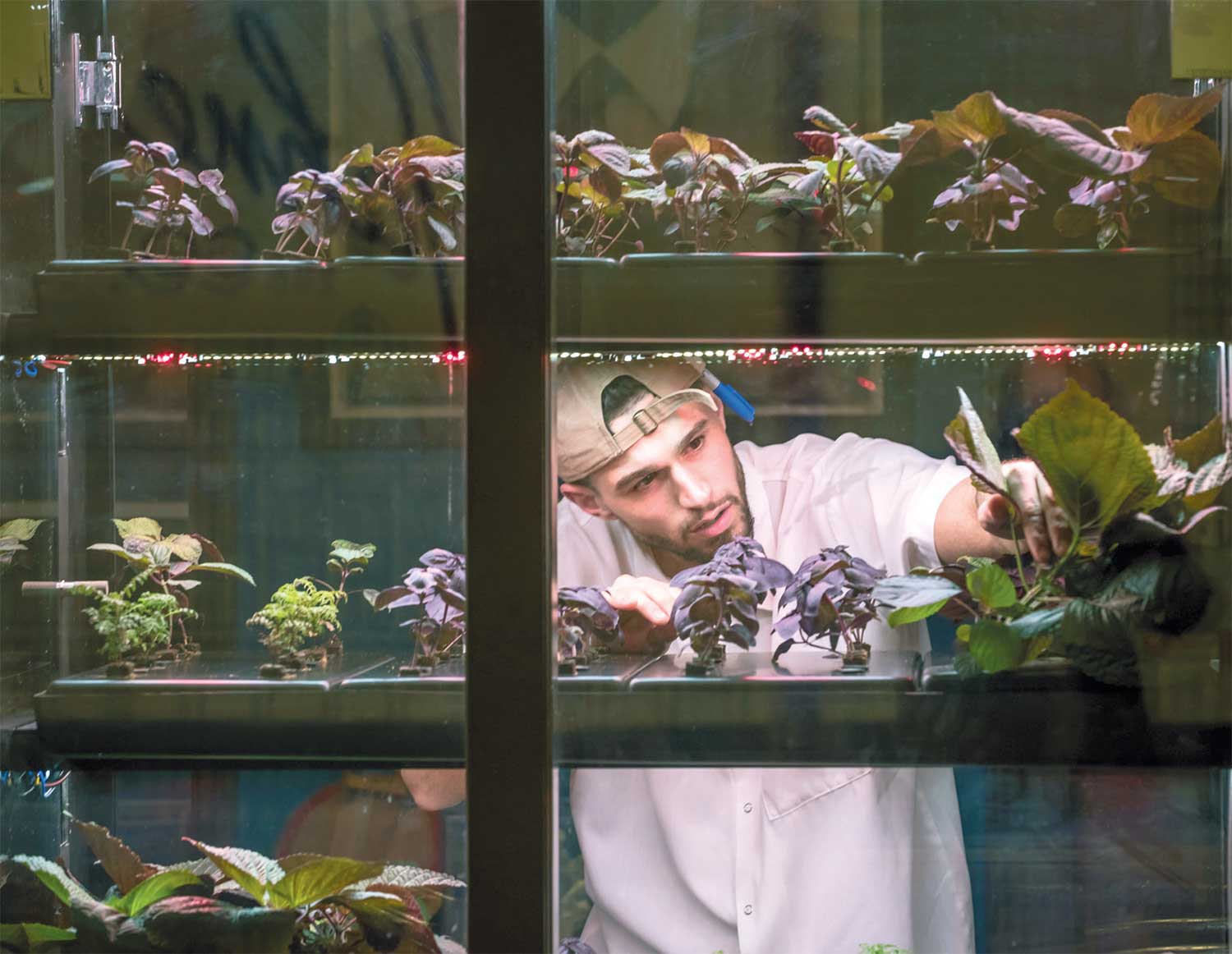A New Chapter for Newark
The city’s survival story: preserving a legacy while pursuing a renaissance
Vonda McPherson is pushing to save Newark’s legacy. Vonda’s Kitchen, McPherson’s seven-year-old brick storefront restaurant, stands like a hybrid monument to the city’s rich history of jazz music and factory work, but also to the gentrification that surrounds it. In the airy dining room, men, women and children crowd at tables for heaping helpings of Southern dishes with a healthy twist, while nationally known enterprises move in and change the tone of the city’s Central Ward.
McPherson’s menu includes black-eyed-pea dip and smothered turkey wings, her interpretations of Southern staples. She believes change can be good. Redevelopment, she says, stretches the possibilities of Newark, allows it to be seen as a much more positive environment.
Yet McPherson also wants to preserve Newark’s flavor. As it is, the traditional soul food kitchens that her father loved, such as John’s Place and Je’s Restaurant, are no more. A renaissance has to be diverse and has to represent all people, she says.
McPherson shares the sentiments of celebrity chef Marcus Samuelsson of Red Rooster Harlem and, now, of Newark’s Marcus B&P. Newark’s history, which includes riots and music, is part of what makes the city a jewel, Samuelsson says.
“I looked at places where there’s a history that speaks to me,” says Samuelsson, explaining how he came to choose Newark. Samuelsson is an Ethiopian native who followed US culture while growing up in Scandinavia. He read about Malcolm X and devoured Spike Lee movies. He knew about Newark’s riots.
“One hundred years ago, [Newark] was the wealthiest city in America, a factory town,” Samuelsson says, which is an exaggeration of Newark’s status, but nonetheless a reminder of just how important the city was during American’s industrial era.
“That’s why those buildings are so iconic. There’s real history, culturally, from jazz to hip hop to R&B.”
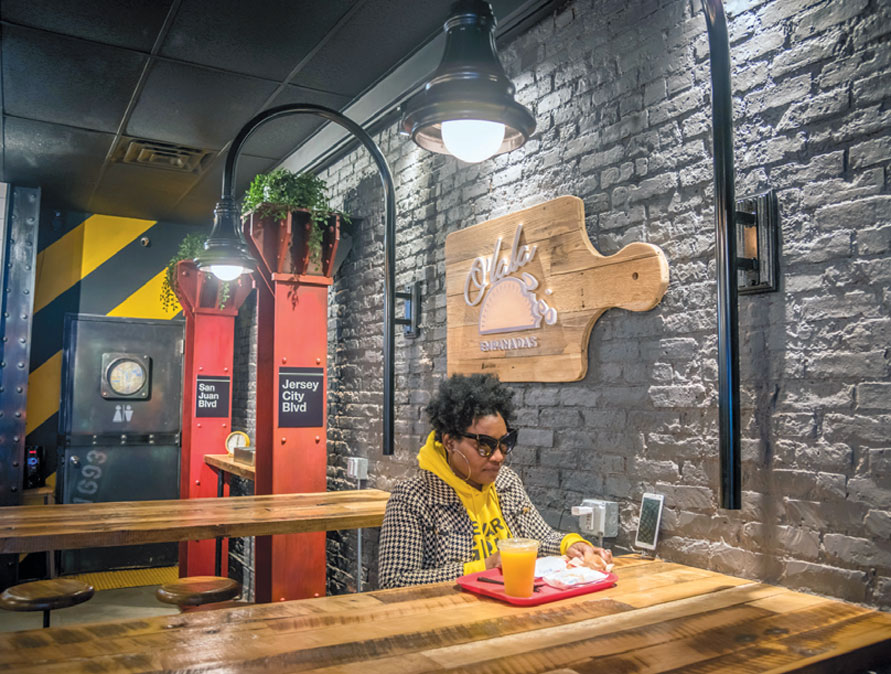
O’LaLa Empanadas, Market Street
“It’s a privilege to be in Newark.”
—Chef Marcus Samuelsson, who recently opened Marcus B&P in the city’s Hahne & Co. building
Part of that cultural history includes “I Will Survive,” a disco anthem recorded by a native of New Jersey’s largest city. Though Gloria Gaynor’s 1979 hit hailed the strength of women, it also could have been celebrating Newark.
The Brick City has seen its share of economic trouble. But in recent years, since 2012, the city has witnessed another wave of business revitalization, with investments from Audible audiobooks, Mars Wrigley Confectionery and, now, the possibility of Amazon joining Prudential Financial and Panasonic as corporate players here.
Food-related businesses also are on the rise. Along with Marcus B&P, which opened in mid-November, there’s BURG, a downtown beer garden that opened in 2015. The headquarters for AeroFarms vertical farms opened in 2016 in a former steel mill. Whole Foods, which some consider America’s national symbol of redevelopment, opened in March 2017. Last year, the editors of the local Patch publication encouraged readers to lobby Trader Joe’s to open in Newark, too.
The trick with this change, locals stress, is to ensure that the city’s culture survives. That culture includes its foundations in jazz music, the soul food cafés launched by African-Americans who migrated north for industrial jobs, and the restaurants that serve paella in the Ironbound district of Portuguese and Spanish-speaking immigrants.
Data USA estimates Newark is 48.6% African-American, 35.6% Latino, 10.8% white, 2.11% Asian-American and 1.57% other.
Locals also stress the importance of inclusion. Last year, Mayor Ras Baraka introduced initiatives that encourage developers and businesses in Newark to hire city residents. Newark 2020 hopes to connect 2,020 unemployed Newark residents with local employers by the year 2020. (A report by the New Jersey Institute for Social Justice notes that Newark residents hold just 18 percent of local jobs.) Meanwhile, Audible last year offered free rent to a group of employees who leased an apartment in the city’s renovated Hahne & Co. building.
Newark’s culture has changed drastically over the years. Puritan colonists founded New Jersey’s largest city in the mid-1600s. By the 1800s, the country looked to Newark for leather, breweries and insurance. The Morris Canal, railroads and highways helped make it a prominent port city.
But after World War II and the Great Depression, economic troubles created an exodus, says Cornell William Brooks, former president of the New Jersey Institute for Social Justice and a member of the transition teams for Gov. Phil Murphy and former Gov. Chris Christie. The city was further dragged down in July 1967, when police beat an African-American cab driver, igniting six days of riots that left 26 dead and more than $10 million in property damage.
Newark also has seen political highs and lows. Former Mayor Hugh Addonizio was convicted of extortion in 1970. In 2002, Mayor Kenneth Gibson pleaded guilty to bribery and stealing from a school. But Cory Booker, during his stint as mayor from 2006 to 2013, drew kudos nationally for generating billions in development.
Recent investments have had an effect. Population estimates rose from 277,130 to 281,764 between 2010 and 2016, according to census figures.
Grit and vacant buildings around Newark Penn Station have given way to bright street lights and new sidewalks.
Audible is set to expand its Newark headquarters to three buildings this year. Mars Wrigley Confectionary announced last year it will move its US headquarters to NJ and bring 500 jobs to Newark. The Brick City is also on the short list for Amazon’s second headquarters, a list that promises to draw attention even to cities that do not win.
Samuelsson has restaurants in London, New York, Chicago, Maryland, Bermuda and Scandinavia, and began eyeing Newark three years ago. He talked it over with New Jerseyans such as Booker, with whom he texts daily, and Rochelle Brown, a television production executive.
“Trust me, they are passionate about their community,” Samuelsson says. “They stayed. “
Samuelsson says he made sure to hire local people, but also researched what newcomers would want, such as a mixology experience.
His Newark menu is a cultural mix. Dorowat rigatoni blends Ethiopian spices with pasta. Fried chicken and waffles includes vegetables in escovitch, a sauce traditionally made in Jamaica.
Like Samuelsson, Whole Foods said it targeted Newark because it wanted to be part of the revitalization of a busy and historic community.
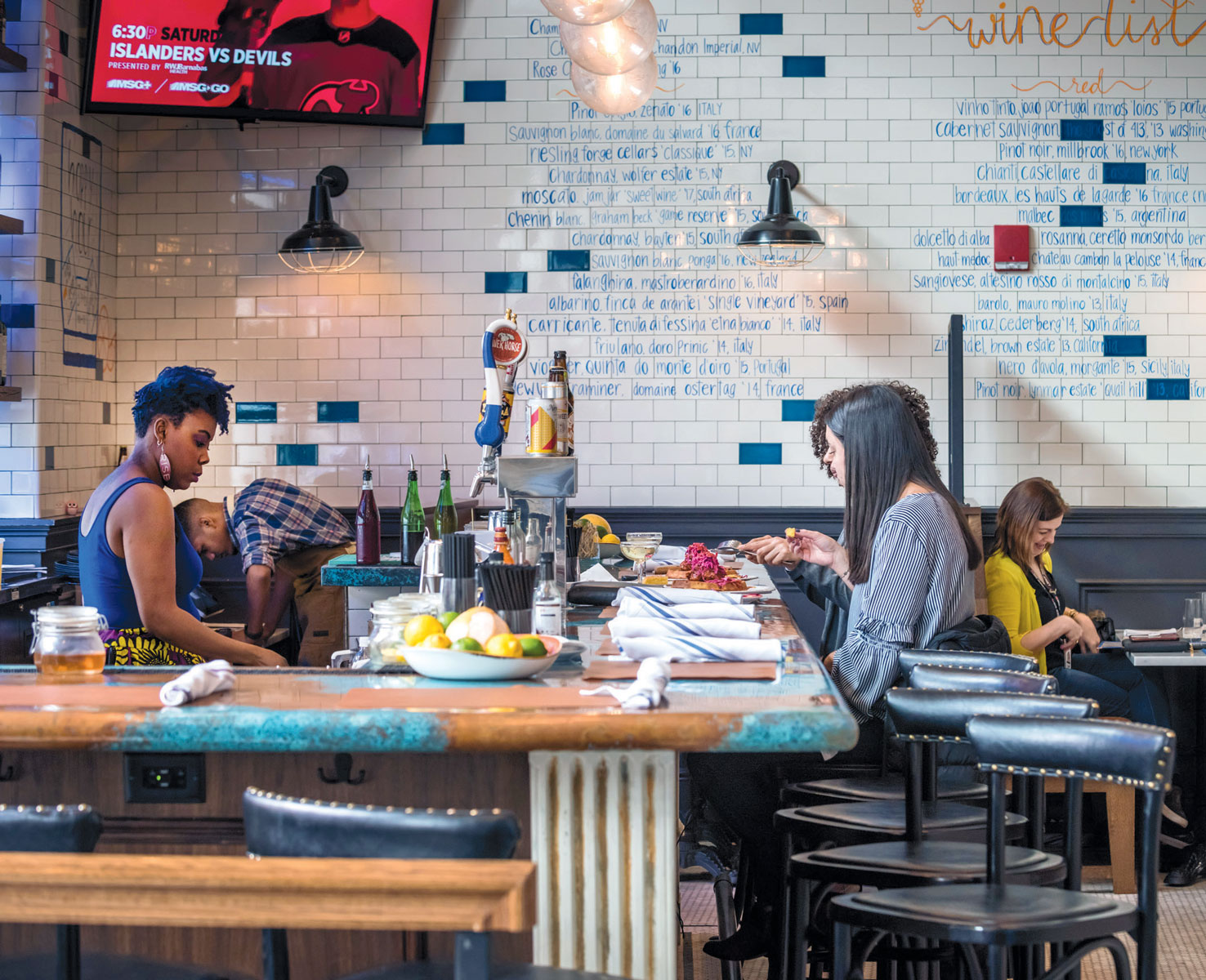
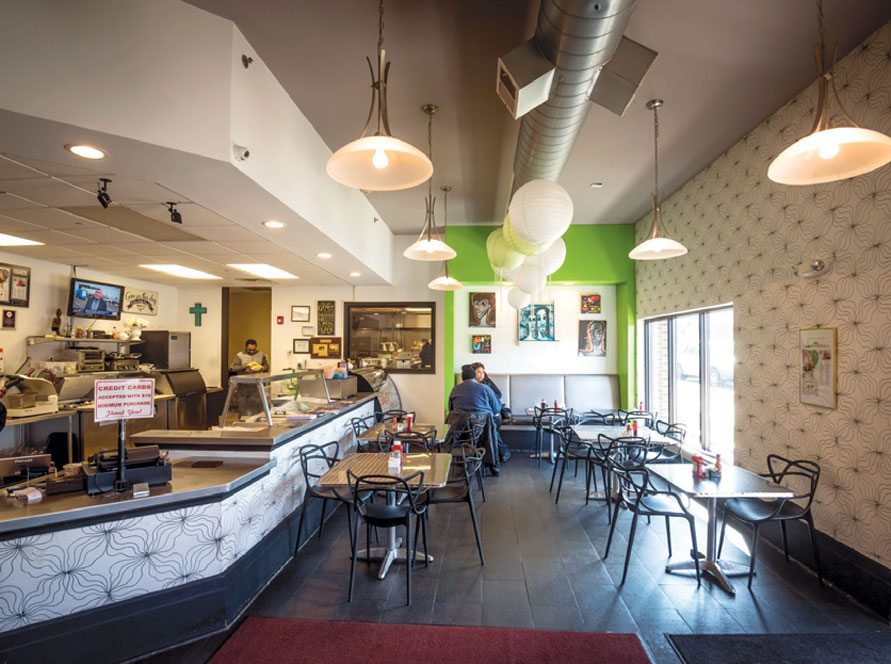
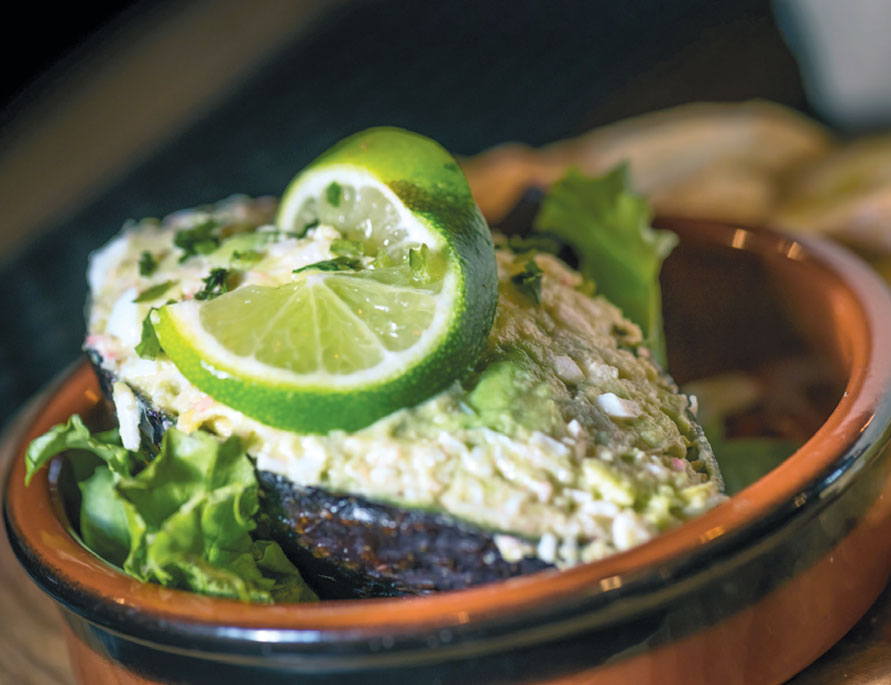
FROM TOP: Marcus B&P; Vonda’s Kitchen; Aguacate relleno, avocado shell stuffed with snow crabmeat,shrimp and house made mayo at Casa d’ Paco
“The downtown area and business district are thriving, and Whole Foods Market is thrilled to be a part of that,” Joseph Torres, store team leader, told Edible Jersey via e-mail.
“Our central location was chosen to make our store accessible for Newark residents from all five of the city’s wards, as well as for college students, employees of area businesses and visitors to the city,” Torres said, adding that the store has brought 145 jobs to the area.
The store also sells local products, including T. M. Ward Coffee and greens from AeroFarms.
Like Whole Foods and Samuelsson, Emily Manz tries to support locals in her work. She believes revitalization should be inclusive. She and her partner, Antonio Valla, started Have You Met Newark tours in 2012; three years later, they added the Nom Nom Newark Food Tour, an experience focused on downtown and the Ironbound that includes everything from food carts to established restaurants.
“We incorporate the history, good and bad,” Manz says. “Everyone sees 1967 as kind of this moment in time, and we really try to unpack that. . . . It was not one moment in time. It was happening in cities across the country.”
Manz fell in love with Newark while traveling from her family’s home in Connecticut to Rutgers University in New Brunswick, where she studied urban planning. Her tours include Newark traditions, such as Redwood Café Supper Club and Hobby’s Deli, as well as newer spots such as Burger Walla, which offers Indian- American food.
While Manz seeks to celebrate what exists, chef and restaurateur Chris Siverson says he and partner, Marc Haskell, wanted to create something new. The pair targeted Newark’s Military Park for BURG beer garden for the same reasons they eyed Jersey City for their Maritime Parc restaurant in 2009: Brooklyn and other places in the regional restaurant market were saturated, and the two New Jersey cities did not have much of a food scene.
After working through the complicated logistics of obtaining a liquor license for a park, the pair opened five months later than planned, in November 2015, with no license.
“We were a beer garden with no beer,” Siverson says. “We were opening a restaurant in the winter in a park in the middle of downtown Newark. We were like, ‘What are we doing?’”
The restaurant shut down this winter to allow the team time to study how to develop a larger customer base for a viable seven-day, three-meal operation.
Brooks and Siverson say Newark’s complication is that it is landlocked by entities like Newark Liberty International Airport, suburbs, colleges and the port/Newark Bay, all of which limit how much can be developed.
But they are hopeful that it will all work out. Samuelsson agrees. “It’s a privilege to be in Newark,” Samuelsson says. “I know we will continue to grow.”
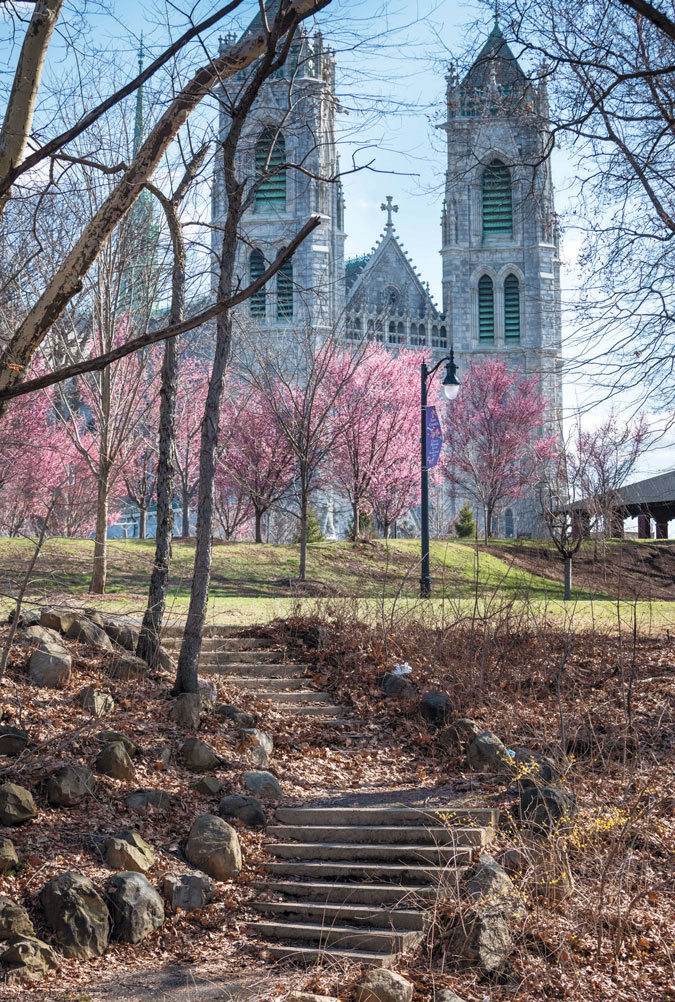
Cathedral Basilica of the Sacred Heart with cherry blossoms viewed from Branch Brook Park
NEWARK BLOSSOMS
Although many Americans associate cherry blossoms with Washington, D.C. and the 1912 gift of 3,020 trees from the mayor of Tokyo to the nation’s capital, Newark actually has more. Branch Brook Park holds an estimated 5,000 cherry blossom trees, according to the Essex County Department of Parks, Recreation and Cultural Affairs. The blooms that traditionally signal springtime date back to 1927, when two prominent families gifted trees to the park. When the blooms declined, Essex County Executive Joe DiVincenzo launched a planting campaign in 2002 that yielded today’s fruitful blossoms. The flowers have been the cornerstone to a revitalization in the park. Don’t miss the Park’s annual festival to catch the blooms at their peak.
2018 Essex County Cherry Blossom Festival
Enjoy a range of activities from 10Ks to bike rides to bus tours, or simply take a stroll to enjoy the beauty. This annual two week celebration held in April culminates with Bloomfest, a day of live performances, cultural demonstrations, kids’ activities and food. Visit essexcountyparks.org for 2019 dates and more information.
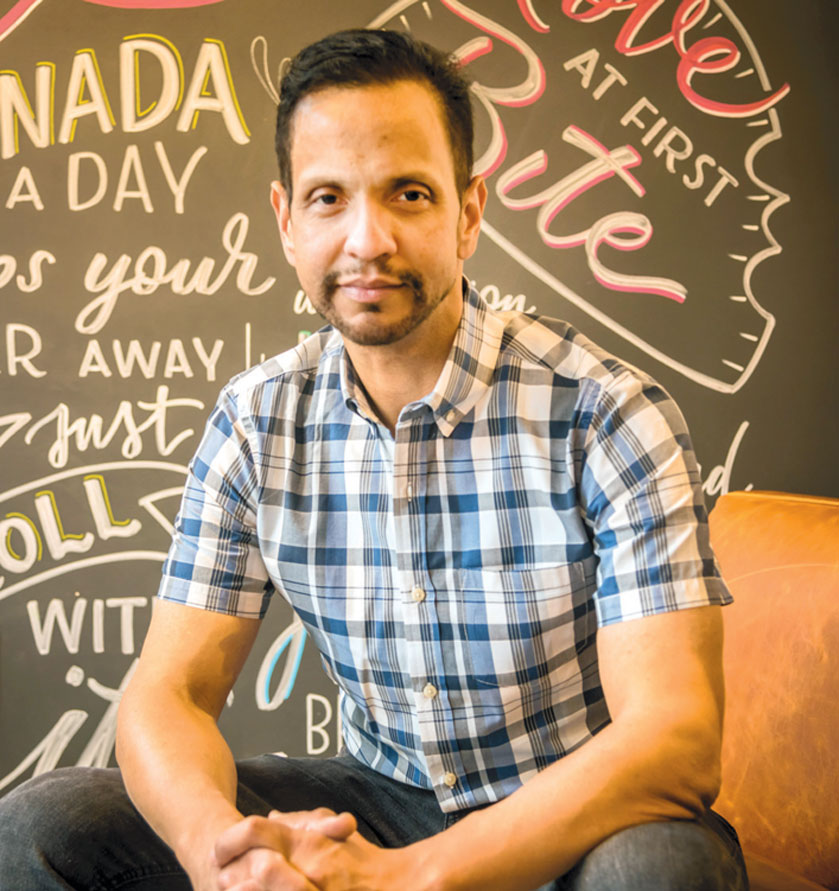
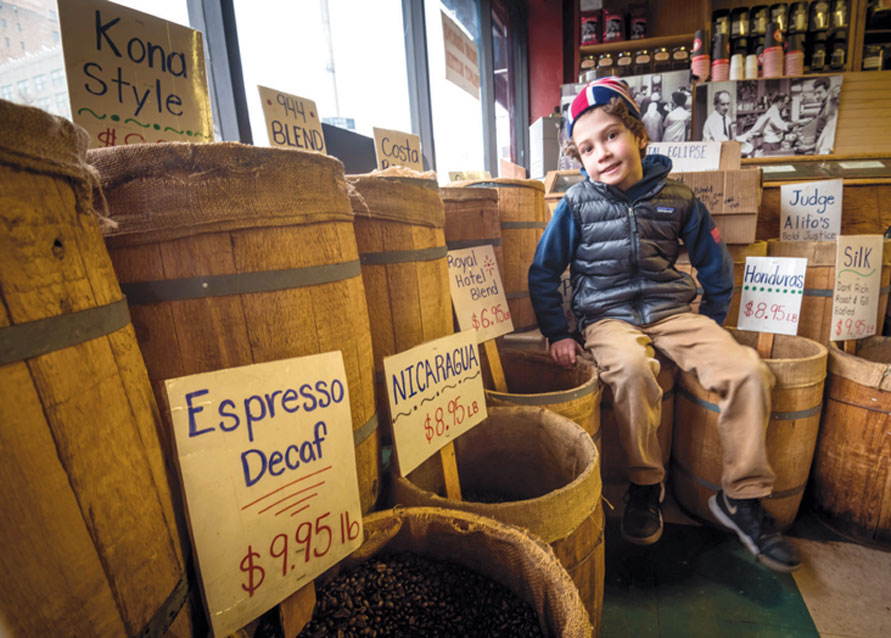
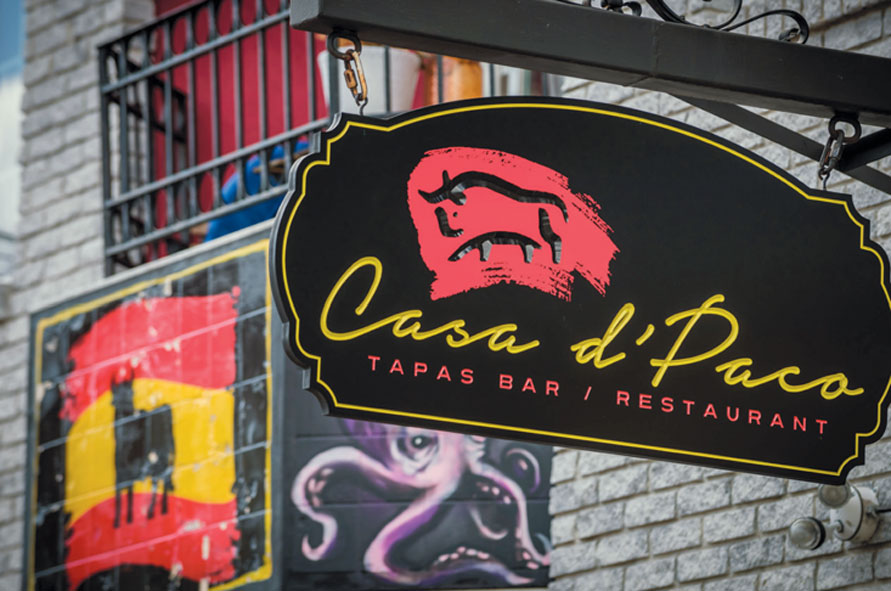
FROM TOP TO BOTTOM: General Manager Ivan Peralta of O’LaLa Empanadas; Zach Sommer (10), son of co-owner, Scott Sommer, T.M. Ward Coffee Co., a four-generation family business. Zach says he’ll be the fifth; Casa d’ Paco


